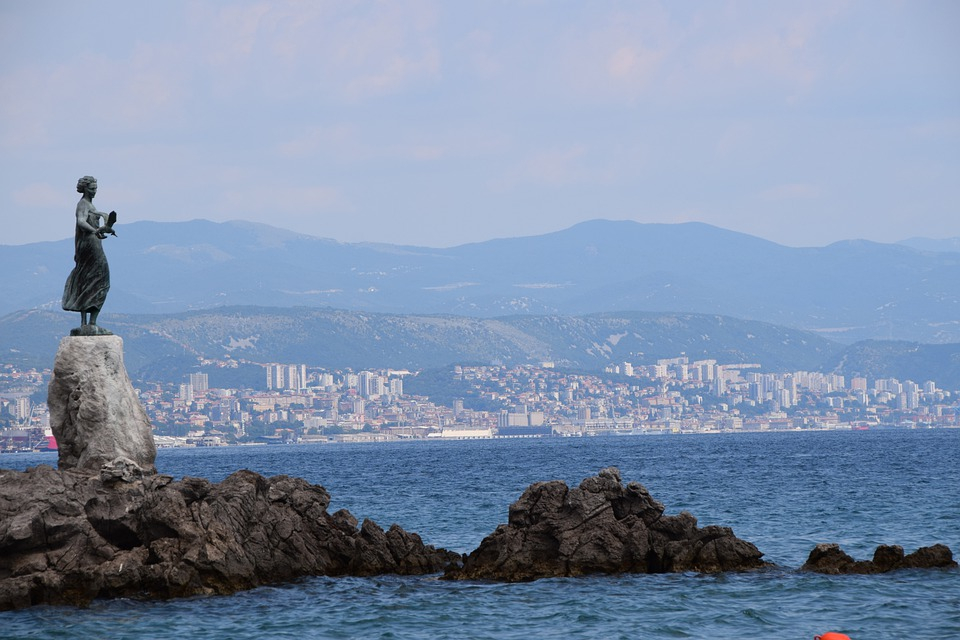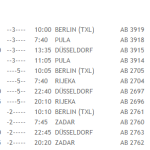As Morski/Marinko Glavan writes, Edmund Tolo from the company Fjellstrand AS, which produces the ferries, considers electric ferries a good solution for the Croatian coast and Adriatic maritime transport, especially on high-frequency shorter lines, such as those in the more northern part of the Adriatic.
”Up in Norway, especially in the fjords, we have a lot of tourists in the summer, to whom, like Croatia, we sell clean nature and clean air. But by transporting these tourists by ships and ferries, we destroyed that very same clean air and pure nature they come for. To prevent this, the idea of fully electric ferries was created, of which there are already forty in use in the Norwegian fjords today, and in the next few years that number will grow significantly,” said Edmund Tolo, an engineer from the Norwegian shipbuilding company Fjellstrand AS, known for their off-shore and other work boats, as well as fast passenger catamarans, Novi list writes.
Tolo held a presentation of electric ferries in Rijeka as a solution for Croatian ferry lines and Adriatic maritime transport, as part of the AdRia4Blue event organised by the Croatian Chamber of Commerce (HGK) – the Rijeka County Chamber, in cooperation with the Kingdom of Norway.
According to Tolo, Norway’s experience in using electric ferries has proven to be very good indeed, especially when running on shorter lines, of which there are many in Croatia, and as such Tolo is convinced that electric ferries will sail along the Croatian coast providing Adriatic maritime transport in the future.
”We started the development of a fully electric ferry due to the need to protect the environment in the sensitive ecosystem of the Norwegian fjords. We have more than 130 ferry lines, we’ve analysed them all and initially determined 50 of them that we considered suitable for electric ferries. When designing the first electric ferry, we had to practically start from scratch, because there were no such similar vessels. The biggest problem was the batteries, their capacity and their lifespan.
The point is that if you use batteries, such as those suitable for installation on a ship, in such a way that they are completely discharged and then charged, they have a very limited shelf life, of only a few hundred cycles. If you use 50 percent of the battery capacity, their service life is one year, but then we wondered how long they’d last if we use only ten to fifteen percent of the capacity on each trip. In that case, the battery life is extended to ten years, which is economically acceptable,” explained Tolo.
Fjellstrand’s engineers have also faced a number of other challenges, such as how to reduce the weight of the ship, and especially how to reduce the total energy consumption of all of the ship systems to a minimum.
”We have extensive experience in the construction of aluminum ships, so we chose this material because of its low weight, as well as its environmental friendliness, since aluminum can be fully recycled virtually infinitely many, many times. On classic diesel-powered ships, energy isn’t a problem, there is too much of it, so not so much attention is paid to its consumption in various marine systems. With an electric boat, however, we had to adjust all the systems, and optimise their operation in order to make them consume as little electricity as possible.
From the pumps, through to the lighting all done with LED technology, to the ventilation, heating and cooling systems, we’ve reduced consumption wherever possible. And so the Ampere was born, the world’s first ferry powered solely by battery electricity. It’s a ship with some serious dimensions and capabilities, eighty metres long, which accommodates 120 cars and 350 passengers. Its speed is ten knots, and its maximum speed is fourteen knots. It was launched back in 2014 and has since sailed on the Lavik Oppedal line, with an average of 34 trips a day,” Tolo noted.
”A large part of electricity in Croatia is produced from hydroelectric power plants, which means that it is produced without emissions of harmful gases, and in an environmentally friendly way. By using electric ferries, the emission of harmful gases is also zero, and noise pollution is reduced, as well as the risk of oil or fuel spills into the sea. In the immediate vicinity of Rijeka you have lines such as Stinica – Misnjak, 3.3 kilometres long, Prizna – Zigljen, three kilometres long or Valbiska – Merag, 6.7 kilometres long, all of which are ideal for using electric ferries on. As technology has advanced and ships of increasing capacity are developing, lines such as Split – Supetar, a little more than 16 kilometres long, are already being considered for the introduction of electric propulsion ships,” noted Tolo.
The advantage of electric ferries, he points out, lies in the consumption, which in Norway, financially speaking and given the ratio of electricity and diesel, in electric ships is about 15 to 20 percent lower than conventional ships of the same capacity.
”Economically, these ferries are profitable, and that’s not to mention the environmental benefits. Their purchase price is about ten percent higher than a comparable diesel-powered boat. So electric ferries certainly have a future, especially in tourist countries like Norway or Croatia, where it’s very important to preserve the clean nature for which tourists come,” said Tolo.
In the meantime, electric propulsion is being developed on other types of ships, and Fjellstrand has been working on a fully electric high-speed catamaran for years now. A prototype, 27 metres long, has already been developed, which can transport 147 passengers, at a speed of as much as 23 knots, with a capacity of about two and a half hours of sailing, Novi list writes.
When asked whether the Croatian side has expressed interest in the procurement, but also the possible construction of electric ferries to the Adriatic, he answered:
”We haven’t had official contacts yet, but I believe that this will happen in the future, because it is an environmentally friendly technology,” concluded Tolo.
For the latest travel info, bookmark our main travel info article, which is updated daily.
Read the Croatian Travel Update in your language – now available in 24 languages.
Join the Total Croatia Travel INFO Viber community.










